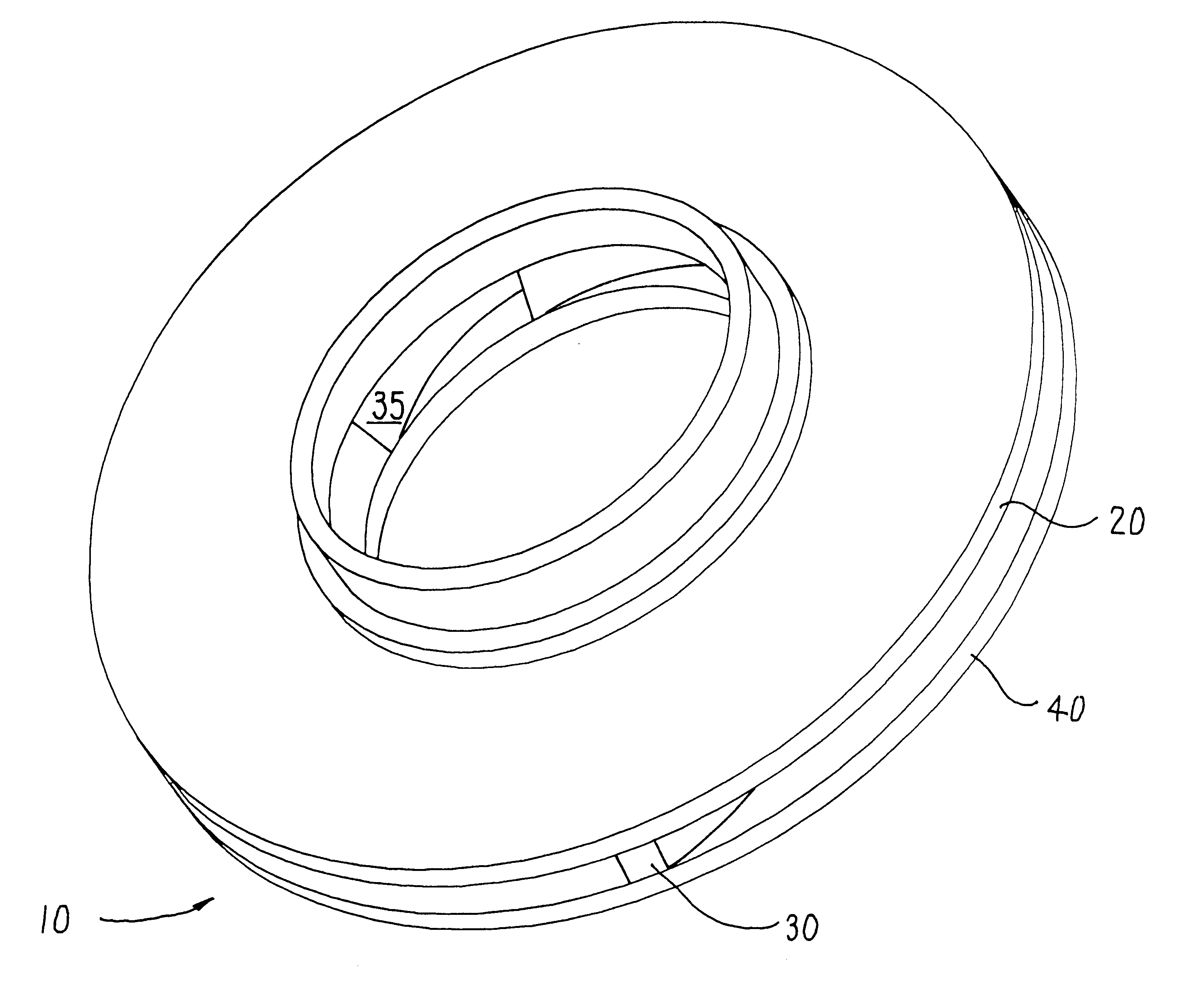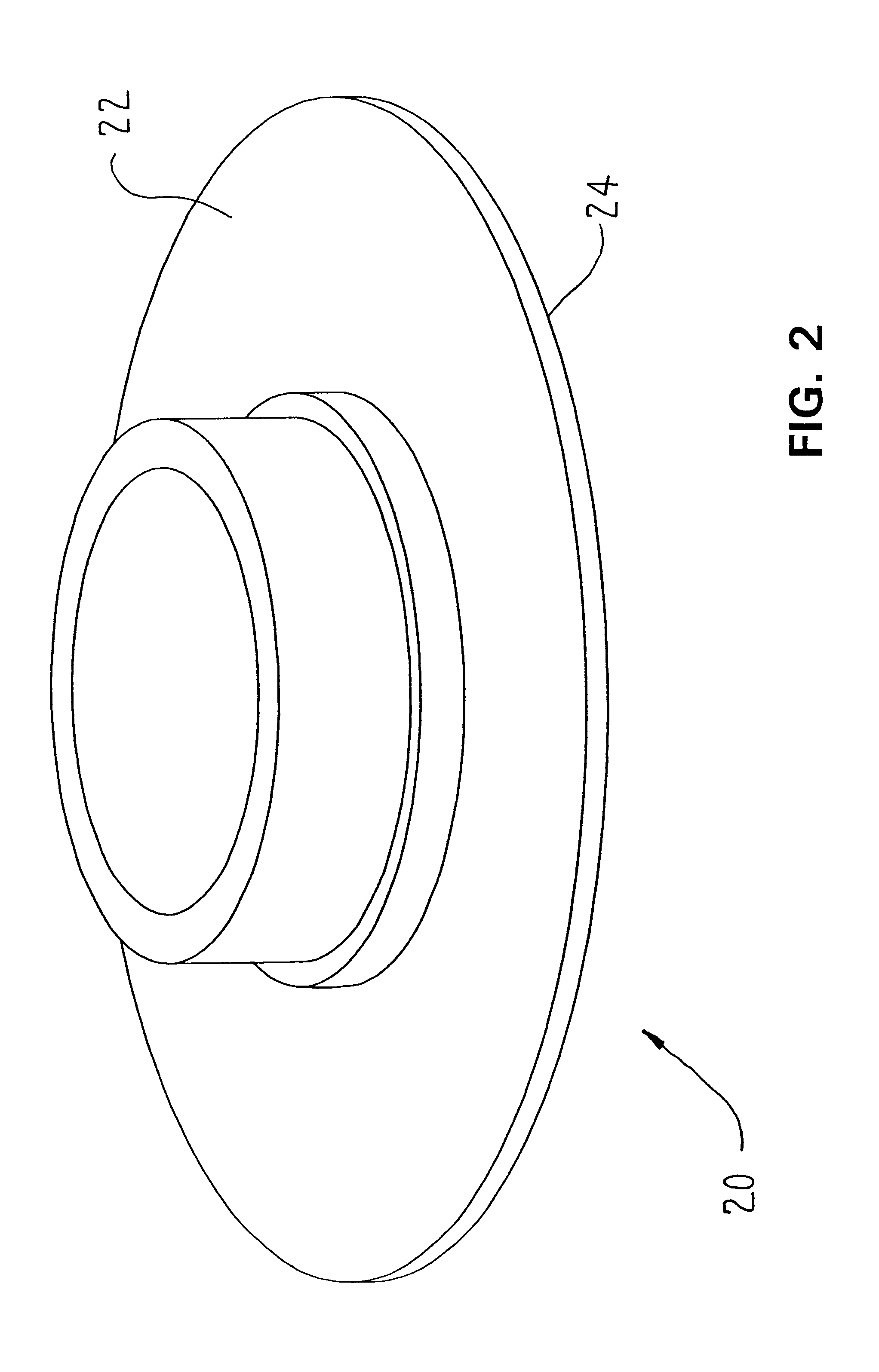Impeller manufacturing process
- Summary
- Abstract
- Description
- Claims
- Application Information
AI Technical Summary
Benefits of technology
Problems solved by technology
Method used
Image
Examples
Embodiment Construction
As illustrated in FIGS. 1-4, the impeller 10 includes three portions--a shroud 20, a core 30, and a hub 40. These portions are individually machined.
The core 30 has a first surface 32, and a second surface 34. The shroud 20 has a first surface 22 and a second surface 24. The hub has a first surface 42 and a second surface 44.
The first surface 32 of the core 30 and the second surface 24 of the shroud 20 are machined to define surfaces which will mate with one another. Preferably, this machining is done by turning the parts on a CNC lathe. However, it will be appreciated by those skilled in the art that any other machining techniques or devices which provide the necessary precision may also be used. Similarly, the second surface 34 of the core 30 and the first surface 42 of the hub 20 are machined to define surfaces which will mate with one another. In a preferred embodiment, the respective mating image surfaces 32, 24 and 34, 42 define complex contours specified by hydraulic drawings...
PUM
| Property | Measurement | Unit |
|---|---|---|
| Weight | aaaaa | aaaaa |
| Diameter | aaaaa | aaaaa |
Abstract
Description
Claims
Application Information
 Login to View More
Login to View More - R&D
- Intellectual Property
- Life Sciences
- Materials
- Tech Scout
- Unparalleled Data Quality
- Higher Quality Content
- 60% Fewer Hallucinations
Browse by: Latest US Patents, China's latest patents, Technical Efficacy Thesaurus, Application Domain, Technology Topic, Popular Technical Reports.
© 2025 PatSnap. All rights reserved.Legal|Privacy policy|Modern Slavery Act Transparency Statement|Sitemap|About US| Contact US: help@patsnap.com



